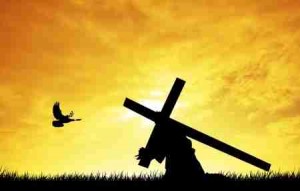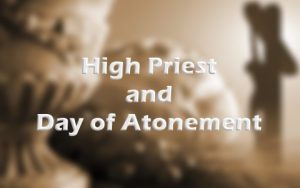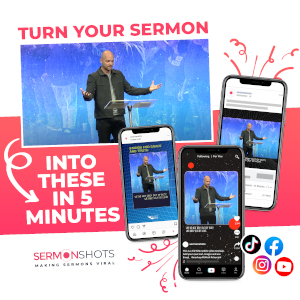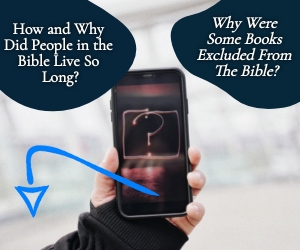One place was off limits to everyone but the high priest, and that was the Holy of Holies, so what is the Holy of Holies?
Day of Atonement
I can’t remember who said it, but it’s one of the best descriptions of what the Day of Atonement means. He said it is a way of becoming “at one” with God, at least for a time. The Day of Atonement is better known to the Jews as Yom Kippur. In the Old Testament, the priest had to get everything perfect on that day because this was a very serious observance. It was the only one of the feasts where a commanded fast was to be observed. The reason for the fast was to afflict oneself and to loathe oneself over their sins. No one is an exception because every one of us sin (Rom 3:10-12), and all of us fall infinitely short of God’s glory (Rom 3:23), so the Day of Atonement included the command to fast. This helped to humble the people’s hearts. For the Jews, it was the holiest day of the year. It also pictures the coming of the Messiah Who will restore all things, including the nation of Israel. Yok Kippur is actually written “Yom Ha-Kippurim” and reads as “a day to atone,” which is strikingly similar to the covering of the ark is called. For Israel, it is a day of deliverance from their sins. Today, we can see that it looked forward to Jesus’ atoning work in His life, death, and resurrection. He has atoned for our sins by taking upon Himself the wrath of God that we deserved. Only through Jesus Christ can we be “at one” with the Father.
The Holiness of God
Remember when Peter and the others saw Jesus just after they had been fishing? When they finally recognized Him, “Simon Peter saw it, he fell down at Jesus’ knees, saying, “Depart from me, for I am a sinful man, O Lord” (Luke 5:8). That’s what anyone in their right mind would do if they were in the presence of Christ; they would fall at His feet since He is God. He is as Isaiah described, “Holy, holy, holy.” Isaiah saw the glory of the Lord that filled the temple to beyond capacity. Above the very throne of God, Isaiah saw “the seraphim. Each had six wings: with two he covered his face, and with two he covered his feet, and with two he flew. And one called to another and said: Holy, holy, holy is the LORD of hosts; the whole earth is full of his glory” (Isaiah 6:2-3)! Isaiah said what we would say in the presence of the glory of God: “Woe is me! For I am lost; for I am a man of unclean lips, and I dwell in the midst of a people of unclean lips; for my eyes have seen the King, the LORD of hosts” (Isaiah 6:5). The holiness of God is what the Holy of Holies is all about. His holiness is the only attribute that is mentioned three times (Holy, holy, holy), so Isaiah is giving it the greatest emphasis possible in Jewish literature, and that is to repeat something three times. There is no greater emphasis in Jewish literature than to repeat something three times, and I believe Isaiah did this because there is no greater attribute of God than the holiness of God.
High Priest
The Day of Atonement is the only day that the high priest is allowed into the Holy of Holies. And even then, everything must be perfect. His having been washed, sanctified, and adorned with the correct priestly garments and accessories. You didn’t get a second chance to get this right. When the sons of Aaron brought in strange fire into the temple, they died. They knew better because they had been taught better, but when there’s little regard for the holiness of God, God becomes more common; more like we are, but God is not like we are. He is sinless perfection and without fault. He is never in need of anything or anyone. And He must be approached in reverence.
Holy of Holies
The Holy of Holies was the innermost chamber of the ancient temple. The room was a perfect cube of 15 feet, and there was no light inside the chamber, save for the glory of God. Inside the Ark of the Covenant was Aaron’s budded rod, some manna, and the two tablets of God’s Law. On top of the ark were two cherubim that covered the top, and much of the ark was overlain with gold. There was also a veil, but in Jesus’ day, the temple veil was enormous, being from 45 to 60-foot high and four inches thick, so the temple veil was a not just a curtain but a thick cloth that was heavy enough to prevent someone from stumbling into the Holy of Holies. The veil was heavy enough to stop anyone from accidentally falling into the Holy of Holies, and as a result, die. Of course, that may not have been the express purpose of the veil, but it was a reminder to Israel that their sins had separated them from a holy God (as was our case), and it was only through Christ that the temple ve il was torn, from the top to bottom (by God), giving us access through Christ into the Holy of Holies, and anyplace where God is, is holy ground.
il was torn, from the top to bottom (by God), giving us access through Christ into the Holy of Holies, and anyplace where God is, is holy ground.
Conclusion
The Holy of Holies in the temple represented many things, but today we are the temple of God in which the Spirit of God lives. He dwells or tabernacles with us and keeps us in the truth and convicts us of sin when necessary. The Holy of Holies must have been an awesome sight to behold, but imagine someday when we see Him as He is, and that’s only because we will have new bodies. Then we can see Him without fear of dying, because prior to that, no one could see God and live. Today we can live with God forever through trusting in the Son of God, and see the Father by seeing the Son.
Here is some related reading for you: What Did the High Priest Do on the Day of Atonement?
Resource – Scripture quotations are from The Holy Bible, English Standard Version® (ESV®), Crossway Bibles. (2007). ESV: Study Bible: English standard version. Wheaton, Ill: Crossway Bibles. Used by permission. All rights reserved.








 Welcome to What Christians Want To Know! The mission of this site is to equip, encourage, and energize Christians. Look for regular updates including Bible Verses, Bible Stories, Christian Quotes, Christian Answers, and much more. Find out
Welcome to What Christians Want To Know! The mission of this site is to equip, encourage, and energize Christians. Look for regular updates including Bible Verses, Bible Stories, Christian Quotes, Christian Answers, and much more. Find out 









